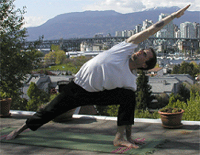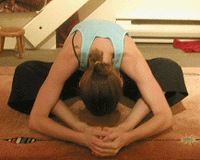All forms of exercise share two features in common:
- first we must stress the tissues,
- then we must let the tissues rest.
 Yang tissues do better when stressed in a yang manner and yin tissues do better when stressed in a yin way. Stress has many negative connotations in our culture because we forget the “rest” part of this equation. But to have no, or little, stress in our life is just as damaging as having too much stress. We need to stress the body, and we need to rest it. There is a yin/yang balance here that leads to health. Too much of anything is not healthy.
Yang tissues do better when stressed in a yang manner and yin tissues do better when stressed in a yin way. Stress has many negative connotations in our culture because we forget the “rest” part of this equation. But to have no, or little, stress in our life is just as damaging as having too much stress. We need to stress the body, and we need to rest it. There is a yin/yang balance here that leads to health. Too much of anything is not healthy.
Yang exercise targets the yang tissues: the muscles. Muscles love to be rhythmically and repetitively moved. Any static holds are brief. The muscles are elastic and can take this type of exercise. However, to apply yang  exercise to yin tissues could damage them. Yin tissues, being more plastic, require gentle but long-held stresses. Imagine bending a credit card back and forth one hundred and eight times every morning. It wouldn’t take many mornings of this for it to snap in half. The credit card is plastic, just as our ligaments are. To rhythmically bend ligaments over and over again, as some students do when doing drop back from standing into the wheel, can, over time, damage the ligaments, just like the credit card was damaged The warning here is do not apply yang exercise techniques to yin tissues!
exercise to yin tissues could damage them. Yin tissues, being more plastic, require gentle but long-held stresses. Imagine bending a credit card back and forth one hundred and eight times every morning. It wouldn’t take many mornings of this for it to snap in half. The credit card is plastic, just as our ligaments are. To rhythmically bend ligaments over and over again, as some students do when doing drop back from standing into the wheel, can, over time, damage the ligaments, just like the credit card was damaged The warning here is do not apply yang exercise techniques to yin tissues!
Applying a yin exercise to yang tissues could also be damaging! Holding a muscle in a contracted state for a long period of time is called “tetany” [1] and may damage the muscle.
Is it better to tighten muscles (yang) or relax them (yin)? That depends on your intention. We tighten our muscles to protect our joints. We relax our muscles so we can exercise our joints. What is your intention in the pose you are doing?
Many health care professionals shudder at the thought of exercising joints; they have the mistaken view that all exercise is yang exercise. Despite this concern it is possible to exercise ligaments, bones, and joints. In fact, it is necessary. However, being yin tissues means we must exercise them in a yin way. And then, please remember the important second part of this equation – we must let them rest! [2]
There is a lot of research proving the importance of stress and rest beyond just developing strength physically, but it is beyond the scope of this journey to go into it further. [3]
- — Tetany is an involuntary cramping of a muscle.
- — As an aside, the theory of exercise applies beyond the tissues of our body. We need to have stress, and then rest, in all areas of our life in order to be healthy. This can include our relationships, our mental abilities, and even our immune system. For example, cancer patients rarely get colds before getting their cancer. Their immune systems were not exercised by colds and thus were weaker than the immune system of people who did get colds regularly. We need to stress our immune systems, appropriately, in order for them to be strong. But we also need rest. Migraine sufferers rarely have heart attacks because their migraines force them to slow down and adopt a yin lifestyle for the few days that their migraines occur. Like our tissues, our lives require periods of stress and rest.
- — If you are curious about the above examples, feel free to start a discussion in the Kula discussion board.
(Next: The History of Yin Yoga )
